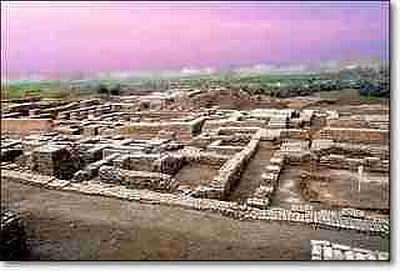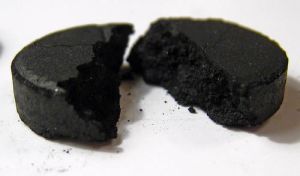[youtube=http://youtu.be/UT_1r5ut78g]
Day: October 27, 2014
Ancient Sunken Cities – 3 Puzzling Enigmas
“Underwater findings such as these three sites give us a new perspective on the history of the human race, and more questions than answers.” – T Newton
Is the truth of human history concealed and buried beneath the oceans? Hundreds of sunken cities adorn the ocean floors of our planet, and dozens of them are believed to be more than 3 millennia old. Although most people are only familiar with the myth of the underwater kingdom of Atlantis, sunken ruins of ancient civilizations are as real as the Egyptian pyramids and can offer us many clues about the history of humanity.
Researchers believe that most sunken civilizations were submerged by the end of the last Ice Age about 9,000 to 10,000 years ago, as the massive ice caps covering much of Europe and North America melted. There are also sunken archaeological sites which are believed to have fallen due to seismic activity, such as earthquakes and volcanic eruption.
What makes the following three sites interesting is that they all date back to a time when we have been taught to believe that humans only lived as nomads or in small settlements and were incapable of organizing a large-scale, civilized society. Although some skeptics may continue to argue that structures at these sites were made by nature, many historians and archaeologists are starting to question the mainstream view of ancient human history and continue to seek proof that support their alternative theories that these were man-made, pre-historic civilizations.
Cambay Ruins

Found off the coast of India near Pakistan in the Gulf of Cambay, the Cambay Ruins are one of the most ancient of the world’s sunken cities. They were discovered in 2001 by India’s National Institute of Ocean Technology, led by chief geologist Badrinaryan Badrinaryan. Artifacts such as pottery, human bones and sections of wall were recovered from the site.
Overpopulation: Fact Or Myth?
“Every man, woman, and child on earth could each have 5 acres of land. (Calculated from numbers found on: “Central Intelligence Agency” The World Factbook).”
Before starting this article, I wish to specify that it is not because I choose to question the concept of overpopulation that I also question the need to end poverty, overconsumption and environmental destruction. Overpopulation may be a concept, but poverty and unsustainable practices are a reality and my life is geared towards raising consciousness about alternative ways to operate as a society.
However, I believe it is important to question everything; even claims closely tied to the activist and environmentalist movement. Why? Because by questioning theories such as overpopulation, I discovered an even more promising future than the never-ending struggle of trying to merely control the damage we cause to the planet and each other without addressing the cause.
Questioning scare-tactics, even if they seem to be geared towards noble causes, does not necessarily deny our support of the causes themselves. Yet they might save us from getting caught up on issues that distract us from the REAL problems and relevant steps we can take to create meaningful and long-lasting change.
The Overpopulation Scare: How It All Started
The concept of overpopulation originated in England in 1798, when the Reverend Thomas Robert Malthus saw that food production increased incrementally, while people reproduced exponentially. Based on his calculations, he predicted that the world would be out of food by the year 1980. Malthus blamed reduced mortality rates and encouraged population reduction. Continue reading
Why Do Banks Want Our Deposits? Hint: It’s Not To Make Loans
“The current problem with small banks is that their cost of funds is too high. Currently the true marginal cost of funds for small banks is probably at least 2% over the fed funds rate that large ‘too big to fail’ banks are paying for their funding.” – E Brown
 Many authorities have said it: banks do not lend their deposits. They create the money they lend on their books.
Many authorities have said it: banks do not lend their deposits. They create the money they lend on their books.
Robert B. Anderson, Treasury Secretary under Eisenhower, said it in 1959:
When a bank makes a loan, it simply adds to the borrower’s deposit account in the bank by the amount of the loan. The money is not taken from anyone else’s deposits; it was not previously paid in to the bank by anyone. It’s new money, created by the bank for the use of the borrower.
The Bank of England said it in the spring of 2014, writing in its quarterly bulletin:
The reality of how money is created today differs from the description found in some economics textbooks: Rather than banks receiving deposits when households save and then lending them out, bank lending creates deposits.
. . . Whenever a bank makes a loan, it simultaneously creates a matching deposit in the borrower’s bank account, thereby creating new money.
All of which leaves us to wonder: If banks do not lend their depositors’ money, why are they always scrambling to get it? Banks advertise to attract depositors, and they pay interest on the funds. What good are our deposits to the bank?
The answer is that while banks do not need the deposits to create loans, they do need to balance their books; and attracting customer deposits is usually the cheapest way to do it.
Reckoning with the Fed
Benefits Of Activated Charcoal: Medicine Of The Egyptians, Greeks, And Native Americans
 Eating charcoal sounds about as appetizing as scarfing down some black, charred remains of a Saturday BBQ, but activated charcoal is a whole other animal. Activated charcoal is used as a detox agent to absorb a host of heavy metals, chemicals, and pharmaceutical drug remains that flow through your blood stream and cause a hindrance to your best health. Activated charcoal absorbs the toxins from your body and then, since it is not absorbed by the body, the toxins along with the charcoal are expelled, leaving you cleaner and more toxin-free.
Eating charcoal sounds about as appetizing as scarfing down some black, charred remains of a Saturday BBQ, but activated charcoal is a whole other animal. Activated charcoal is used as a detox agent to absorb a host of heavy metals, chemicals, and pharmaceutical drug remains that flow through your blood stream and cause a hindrance to your best health. Activated charcoal absorbs the toxins from your body and then, since it is not absorbed by the body, the toxins along with the charcoal are expelled, leaving you cleaner and more toxin-free.
The Numerous Benefits of Activated Charcoal
Charcoal is “activated” because it is made to have a very small particle size. This increases its overall surface area and absorptive capacity. Activated charcoal is produced by adding acid and steam to carbonaceous materials such as wood, coal, rye starch, or coconut shells. To understand just how effective this substance is at absorbing toxins, one standard 50-gram dose of activated charcoal has the surface area of 10 football fields. It also encourages bowel movements, so it can help to rid the body of toxins rather quickly. Continue reading
